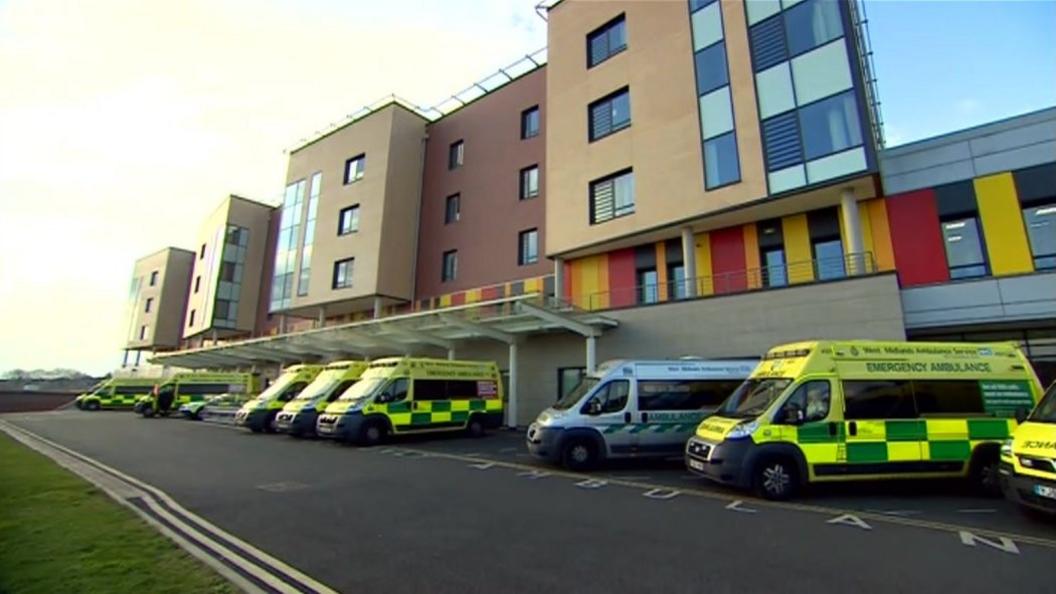Flu-like illness blamed for 'highest' Royal Stoke A&E visits
- Published
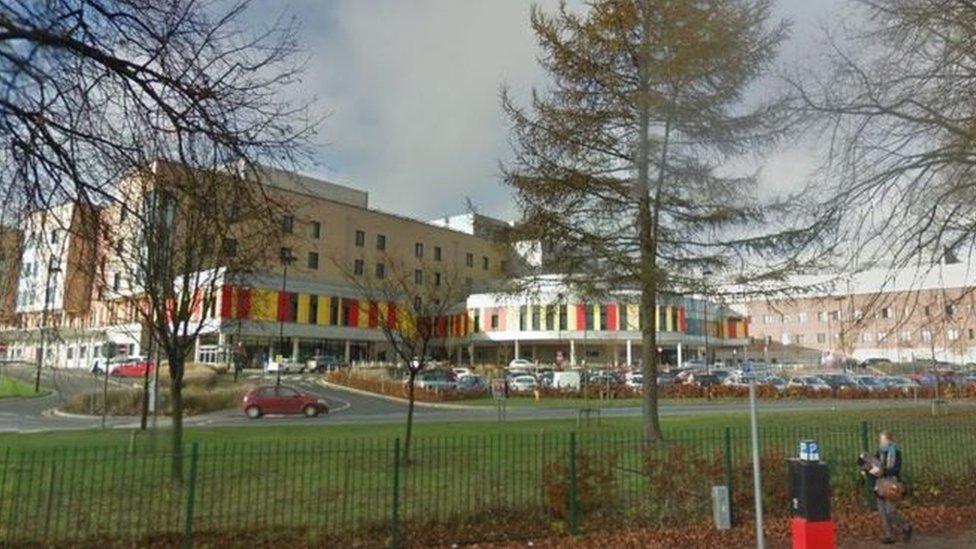
Patient numbers have been rising anyway, the Royal Stoke Hospital said.
A flu-like illness has been partially blamed for the highest number of people to go to a hospital's A&E department.
Nearly 500 patients went to A&E at Royal Stoke Hospital in 24 hours on Monday, including 155 children.
Seventy children would visit A&E on a typical day, so 155 is a significant increase although patient numbers have been rising anyway, a spokesman said.
Influenza-like illnesses and respiratory ailments were to blame, the Stoke-on-Trent hospital said.
The hospital said while it had seen the highest number of patients ever attend the A&E it had done much to alleviate pressures.
Allow X content?
This article contains content provided by X. We ask for your permission before anything is loaded, as they may be using cookies and other technologies. You may want to read X’s cookie policy, external and privacy policy, external before accepting. To view this content choose ‘accept and continue’.
A total of 499 patients went to the emergency department on Monday.
In comparison, on the third Monday in November 2018, 452 patients went to A&E, 103 of which were children.
Medical director John Oxtoby said the hospital was experiencing increased demand "like many hospitals around the country".
"The colder months bring with them more cases of influenza-like illnesses, respiratory ailments, particularly among children and we see more accidents due to adverse weather conditions.
"This can lead to a number of challenges, particularly for our emergency department," he said.
"However, we do of course plan for these peaks in demand and while the last 24 hours has seen the highest number of patients ever attend our A&E at Royal Stoke University Hospital, we have done much to alleviate the pressures."
University Hospitals Birmingham said it had also seen "very high demand" at the Queen Elizabeth Hospital A&E overnight, with its children and minor injury departments seeing significant demand.
While Shrewsbury and Telford Hospital NHS Trust said throughout the whole of October, it saw 12,399 emergency attendances, 1,135 more than in October 2018.
"That rise in emergency demand has continued into November. So far this month, we have already seen over 800 more attendances than the same time last year," a spokesman said.

Follow BBC West Midlands on Facebook, external, on Twitter, external, and sign up for local news updates direct to your phone, external.
- Published14 November 2019

- Published10 October 2019
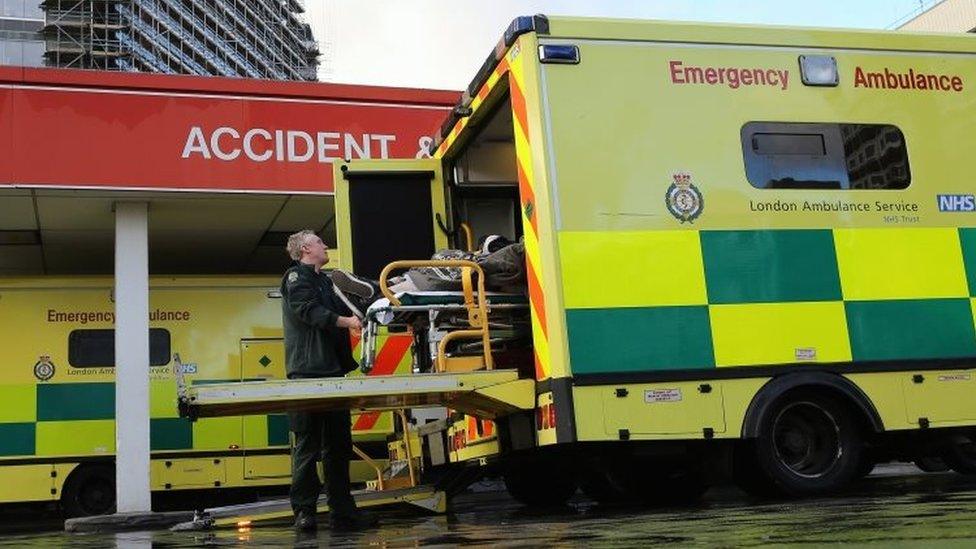
- Published12 July 2019
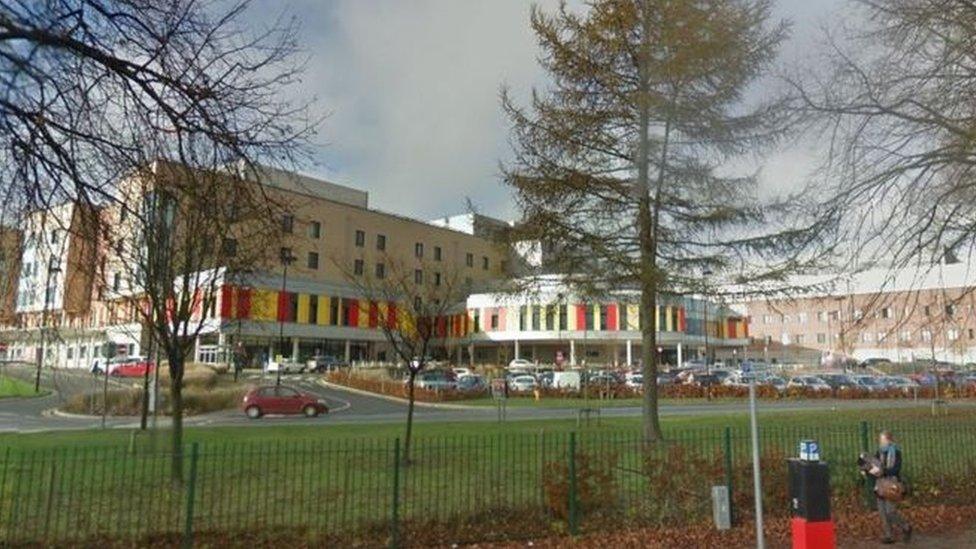
- Published11 March 2019
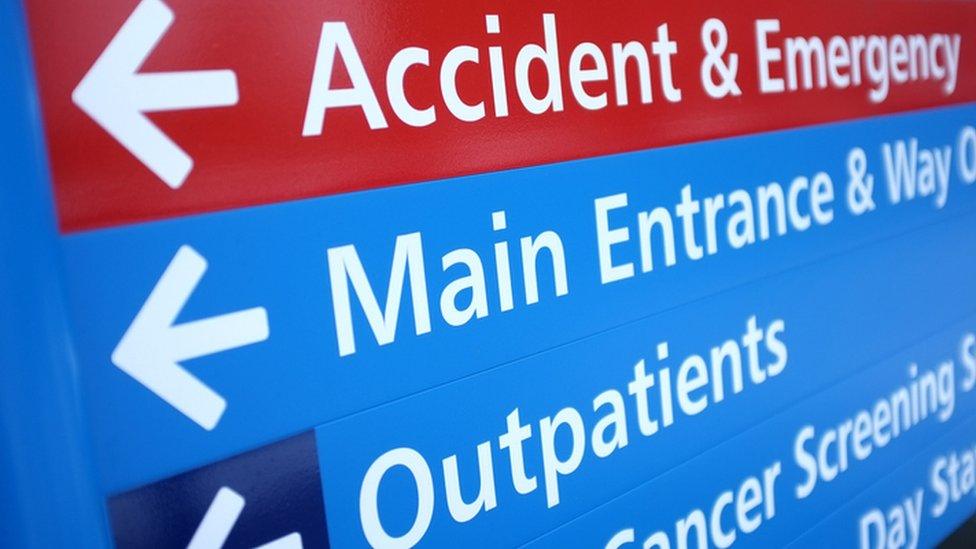
- Published14 February 2019
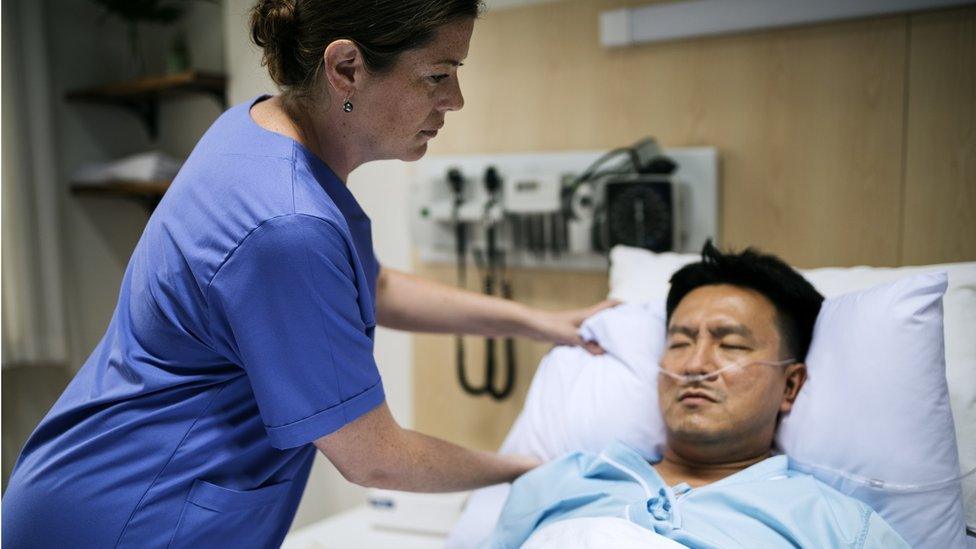
- Published29 December 2014
